Hitch locks are crucial tools for securing trailers, hitch-mounted accessories, and other valuable items to your vehicle, acting as a deterrent against theft. These locks are designed to provide peace of mind by ensuring your belongings remain safe during periods of storage or transport. However, challenges can arise when it comes to unlocking them.
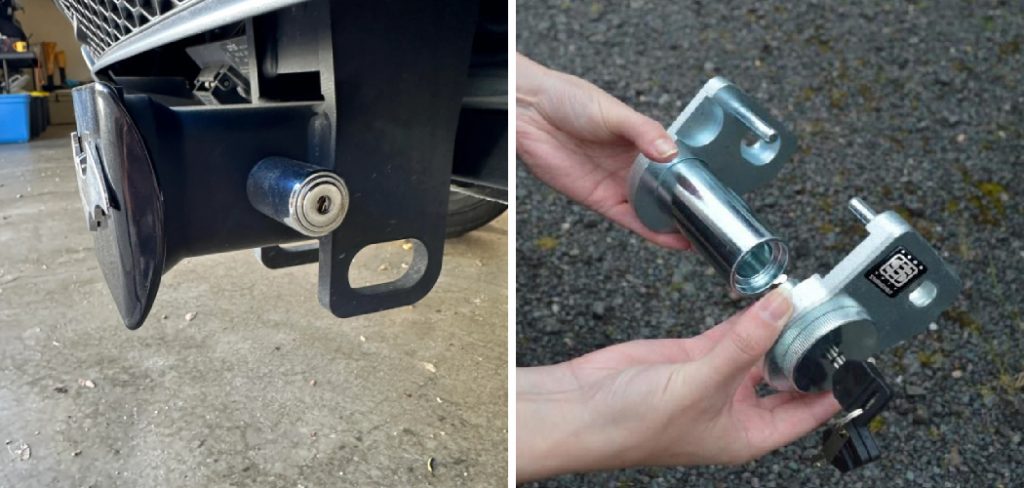
Whether you’ve misplaced the key, forgotten the lock’s combination, or are dealing with a jammed mechanism, knowing how to unlock hitch lock effectively is essential. This article aims to provide a comprehensive, step-by-step guide to help you unlock a hitch lock in various situations, ensuring both safety and convenience. By following the outlined methods, you can address common issues and regain access without causing damage to your lock or equipment.
Types of Hitch Locks and Their Mechanisms
Hitch locks come in various designs, each offering distinct levels of security based on their mechanisms. Understanding these types can help you effectively address unlocking challenges.
Pin-Type Hitch Locks
Pin-type hitch locks are among the most common and straightforward options. These locks consist of a pin that secures the hitch and is typically operated using a key. They are often used for standard trailers and provide a basic level of security, making them a popular choice for general purposes.
Combination Hitch Locks
Combination hitch locks utilize a numeric or alphanumeric code instead of a key. This eliminates the need to carry a physical key, making them more convenient for users who frequently misplace keys. They are reliable and secure, assuming the code remains confidential.
Clamp-Type Hitch Locks
Clamp-type hitch locks operate using a robust clamping mechanism that encases a portion of the hitch. These locks are generally considered more secure as they are difficult to tamper with. They are often preferred for heavy-duty or more valuable trailers requiring enhanced protection.
Choosing the Right Method
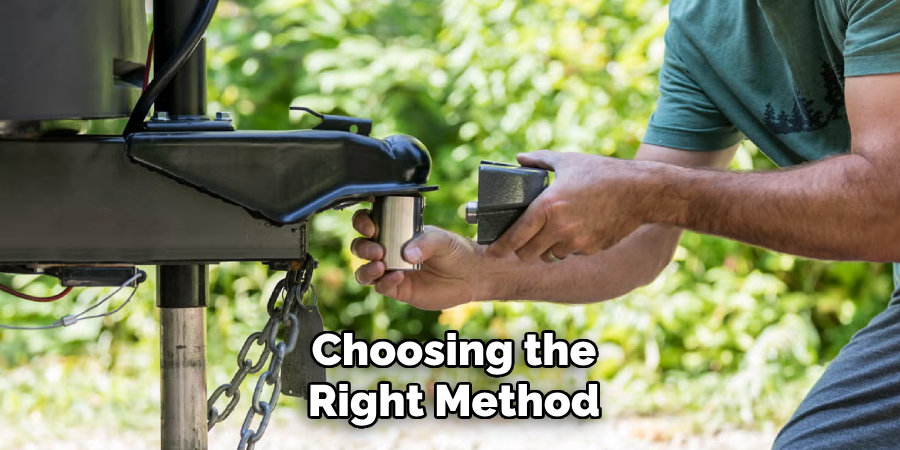
Identifying the type of hitch lock you are dealing with is crucial to determine the appropriate method for unlocking it. Each mechanism has unique features and challenges, so selecting the correct approach will ensure efficiency and reduce the risk of damage.
Materials and Tools Needed
Having the right materials and tools on hand is essential to successfully unlocking a hitch lock. Here’s a breakdown of what you may need based on your situation:
General Tools
- Spare key or combination – If you’ve misplaced your key or forgotten your combination, try to locate any spares or reach out to the lock’s manufacturer for a replacement.
- WD-40 or lubricant spray – Ideal for loosening locks that are stuck or have accumulated rust.
- A lock pick set – This can be helpful for advanced users if the lock mechanism is malfunctioning.
- Pliers or wrenches – Useful for pin-type locks, especially when dealing with corrosion or rust.
Optional Tools
- Hammer and punch – These tools might be useful to remove a jammed or stuck lock.
- Drilling tools – For extreme cases where the lock cannot be opened, drilling may be necessary, but it should always be a last resort.
Make sure to evaluate the specific condition of the hitch lock before deciding which tools to use, and exercise caution to avoid damage to your trailer or hitch.
Troubleshooting and Assessing the Situation
When encountering issues with your hitch lock, it’s essential to troubleshoot systematically to determine the root of the problem and find the best solution. Below are the steps to follow for effective troubleshooting:
Step 1: Check for Sticking or Rusting
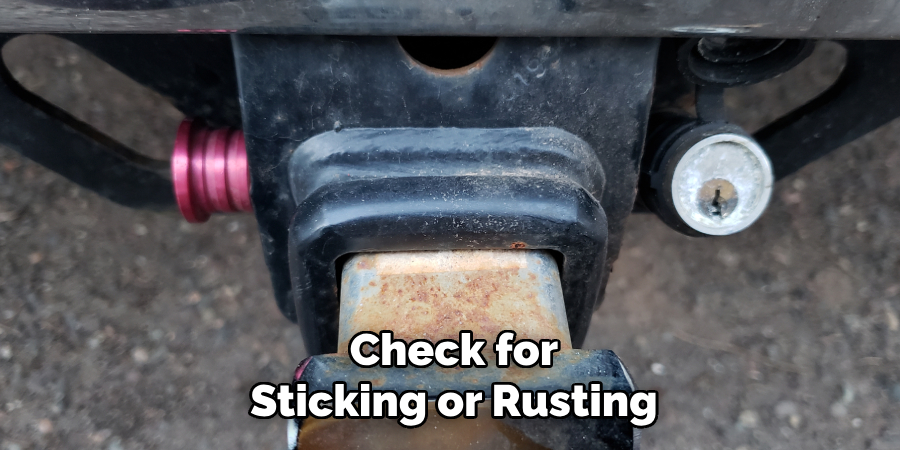
Examine the lock for any signs of rust, dirt, or debris buildup that might be causing it to stick or preventing smooth operation. Corrosion can often be the culprit behind a jammed lock, especially if the lock is exposed to the elements. Apply a penetrating oil like WD-40 to the affected areas and allow it to sit for several minutes to loosen any rust or dirt. After letting it sit, gently turn the key or mechanism to test the lock’s functionality.
Step 2: Ensure You Have the Right Key or Code
Before considering more invasive methods, double-check your key or combination code. Sometimes, it’s easy to overlook details, such as inserting the wrong key or misremembering the code’s sequence. If you’ve misplaced the key or forgotten the code, review any documentation that came with the lock or contact the manufacturer for assistance. Many manufacturers provide replacement keys or guidance on resetting their locks’ combinations.
Step 3: Assess for Mechanical Failures
If the lock remains unresponsive or the mechanism feels loose, stiff, or otherwise compromised, it could be a sign of mechanical failure. Gently wiggle the pin or lock mechanism to see if it loosens. Do not apply excessive force, as this may cause further damage. If you suspect internal damage, you may need to consult a locksmith or consider replacement tools to address the issue properly.
How to Unlock Hitch Lock: Unlocking a Pin-Type Hitch Lock
Step 1: Lubricating the Lock
Apply a suitable lubricant, such as WD-40, directly into the keyhole to help loosen any internal components that may be stuck due to debris or rust. Allow the lubricant to sit for a few minutes to penetrate the mechanism. This step can significantly improve your chances of unlocking the hitch lock smoothly.
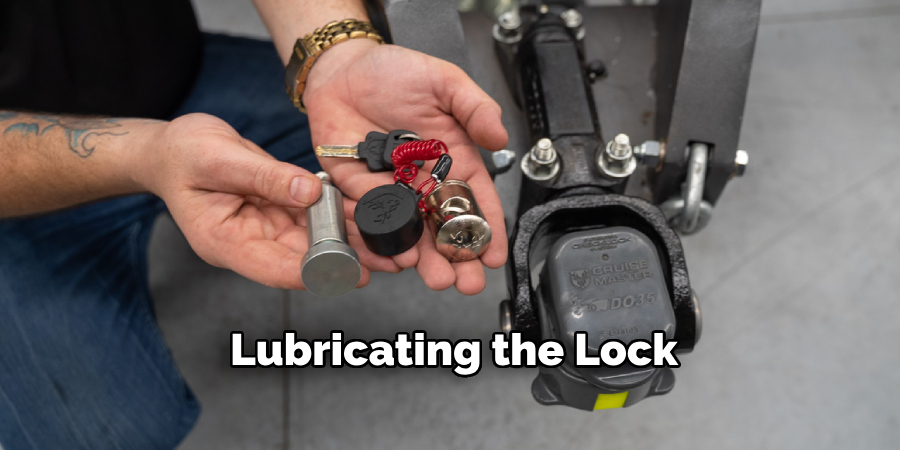
Step 2: Insert the Key and Turn
Once the lubricant has settled, insert the key into the lock. Turn the key gently without applying excessive force. If the lock is still stuck, avoid forcing the key as this may risk breaking it inside the mechanism.
Step 3: Using Pliers for Stubborn Locks
For locks that remain jammed, you can use a pair of pliers to twist the key while applying slight pressure gently. Be cautious during this process to avoid damaging the key or the lock. The added leverage from the pliers can often help release the lock if it’s stiff or stuck.
Step 4: Removing Rust or Debris
If rust or debris is evident on the lock, use a wire brush to clean around the keyhole thoroughly. This step will help remove any obstructions preventing the key from functioning correctly. After cleaning, reapply lubricant if necessary and attempt to turn the key again.
How to Unlock Hitch Lock: Unlocking a Combination Hitch Lock
Step 1: Double-check the Combination
Verify that you have the correct combination. If you’re unsure or have forgotten it, refer to the lock’s documentation or any written record you might have kept. If this information isn’t available, contact the lock manufacturer for assistance. They may have resources such as serial numbers or registration systems to help you retrieve the combination.
Step 2: Apply Gentle Pressure
When inputting the combination, apply light pressure on the lock mechanism while turning the dials, ensuring they rotate smoothly. Check that you’re turning the mechanism in the correct direction, as many combination locks only open one way. This step ensures the locking components align properly as the correct code is entered.
Step 3: Tapping the Lock
Sometimes, a combination mechanism may become stuck due to dirt, debris, or wear. Gently tap the lock with a small hammer or the palm of your hand while simultaneously turning the dial. The vibrations can help dislodge any internal blockages and allow the mechanism to move freely.
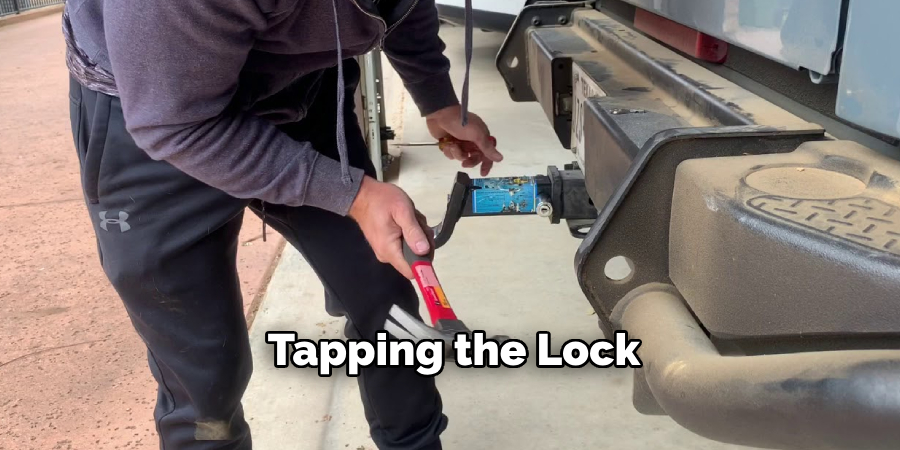
Step 4: Resetting the Combination
If you’re still unable to unlock it, check if your hitch lock has a reset feature. Some combination locks allow users to reset the code, but this typically requires proof of ownership or a specialized tool provided by the manufacturer. Consult the lock’s manual for specific instructions and be ready to provide documentation, such as a purchase receipt, if contacting the manufacturer for support.
Dealing with a Stubborn, Jammed, or Broken Lock
Step 1: Removing a Jammed Lock
If you’re dealing with a jammed hitch lock, consider using a lock-picking kit if you have the necessary skills and tools. This approach requires precision and a steady hand to manipulate the internal lock mechanism. If you’re not confident in picking the lock, hiring a professional locksmith is a safer and more reliable option. Locksmiths possess the expertise and equipment needed to open jammed locks without causing unnecessary damage to your hitch or vehicle.
Step 2: Drilling Out the Lock
After all other methods have failed, drilling out a jammed or broken lock should only be used as a last resort. If you proceed with this option, start by using a small drill bit to create an initial hole in the lock’s core, and then gradually increase the bit size until the lock can be disabled. Take proper safety precautions, such as wearing protective eyewear and gloves. Remember that drilling into the lock will render it unusable, so you must replace it afterward.
Step 3: Replacing the Lock
When a lock is damaged beyond repair, replacing it is essential for maintaining the security of your hitch. Contact your vehicle or trailer manufacturer to ensure you purchase a compatible replacement lock. Investing in a high-quality, durable lock is recommended to prevent future issues and enhance your equipment’s security.
Preventing Hitch Lock Problems in the Future
Regular Maintenance
Apply lubricant periodically to prevent rust and ensure smooth operation. Additionally, regularly inspect the lock for debris, dirt, or buildup that could cause the mechanism to jam. Keeping the lock clean and well-maintained will prolong its lifespan and reduce the chances of malfunction.
Using a Lock Cover
Protect your hitch lock from harsh weather conditions by using a durable lock cover. This will help keep moisture, dust, and dirt away from the lock, reducing the risk of corrosion or internal damage.
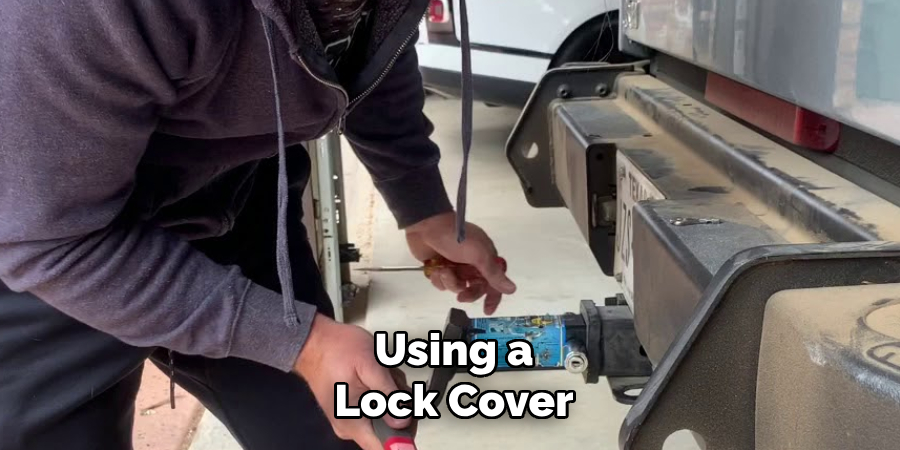
Choosing a High-Quality Lock
Investing in a high-quality, weather-resistant lock can significantly reduce the likelihood of future problems. Look for a lock made from sturdy, rust-resistant materials that are designed to hold up against heavy use and extreme weather conditions.
Store the Key Safely
Always keep your spare key in a secure location. Consider using a key storage box or a designated spot that is easy to remember for added convenience and peace of mind.
Conclusion
Knowing how to unlock hitch lock mechanisms is essential to avoid delays and frustration during your travels. We discussed multiple methods, including troubleshooting common issues, using tools to open pin-type and combination locks, and strategies for dealing with stubborn locks caused by rust or debris. Regular maintenance, such as cleaning and lubricating the lock, can prevent many issues before they arise.
Additionally, investing in a high-quality lock and storing your key safely are crucial preventative measures. If all else fails, contacting a professional locksmith is a reliable option for unlocking or replacing the lock. Prioritize care to ensure hassle-free use.

